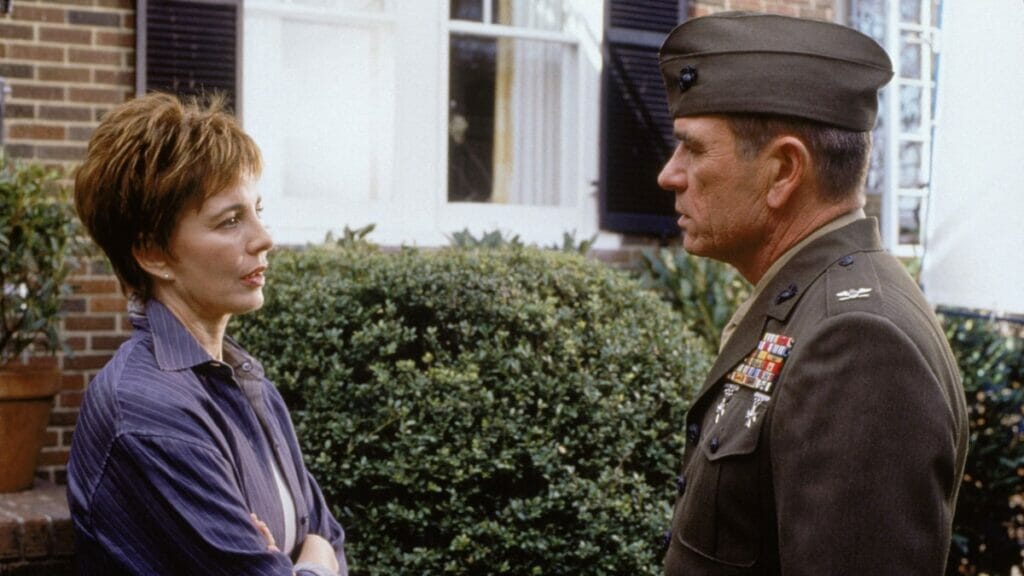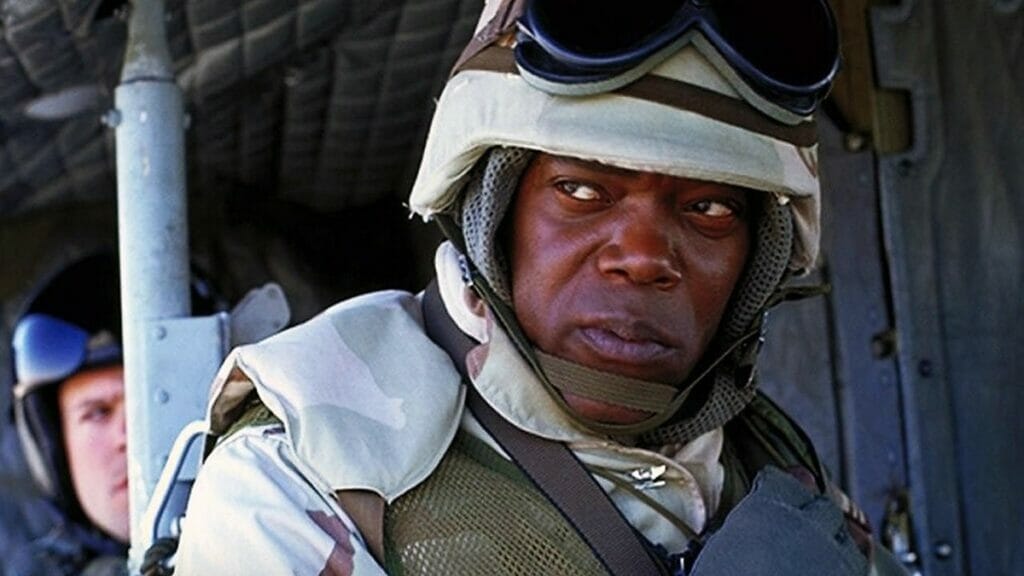The military courtroom drama has its moments, but is more notable for where it sent the director next.

Every month, The Spool chooses to highlight a filmmaker whose works have made a distinct mark on the cinematic landscape.
The funny thing about William Friedkin is that if you ask six people what their favorite Friedkin film is, you’ll get six different answers. These hot and cold responses marked Friedkin’s career overall, one that, for all its faults and stumbles, was never predictable or boring. He had no trademark and refused to be pinned down.
This piece was written during the 2023 SAG-AFTRA strike. Without the labor of the actors currently on strike, the works being covered here wouldn’t exist.
Even William Friedkin’s most loyal fans would admit the Nineties were not a particularly fertile artistic period for him. That decade saw him putting out the laughable horror film The Guardian (1990), the eventual release of his long-on-the-shelf and heavily recut 1987 death penalty drama Rampage (1992), the tepid sports drama Blue Chips (1994), and the resoundingly unnecessary (save for a nifty car chase) Jade (1995). On the small screen, he helmed two made-for-cable remakes, the Roger Corman production Jailbreakers (1994) with Shannen Doherty, Antonio Sabato Jr., and Adrien Brody, and 12 Angry Men (1997) with a powerhouse cast that included Jack Lemmon, George C. Scott, Ossie Davis, James Gandolfini and, perhaps inevitably, Tony Danza.
With that film earning him his best notices in a while, Friedkin may have thought that courtroom dramas centered around strong actors showing their stuff was the ticket to restoring his credibility as a filmmaker. Perhaps not surprisingly then, his next film was another courtroom thriller, starring two of America’s most notable actors, Tommy Lee Jones and Samuel L. Jackson. The resulting project, 2000’s Rules of Engagement, was easily his strongest theatrical endeavor since To Live and Die in L.A. Still, it lacked the fire of his greatest works. That’s primarily due to the general inadequacies of Stephen Gaghan’s screenplay, which huffs and puffs but never really gets anywhere.

The film opens in 1968 in the fog of the Vietnam War. An attack on an American advance team leaves Marine Lt. Hayes Hodges (Jones) grievously wounded and the rest of his platoon dead. Another platoon leader, Lt. Childers (Jackson), saves him, using extreme methods to force the cancellation of a mortar attack on Hodges’s position. After his rescue, he returns home and spends the next 28 years working as a JAG officer. Childers remains an active soldier, spearheading an effort to evacuate the U.S. Ambassador to Yemen (Ben Kingsley) and his family from the embassy when a seemingly ordinary protest outside turns violent.
After getting them safely to a helicopter, Childers’s men take sniper fire, resulting in the deaths of three Marines. Seemingly in response, he orders the rest of his unit to open fire on the crowd. When the dust settles, American bullets have killed 83 Yemeni, including several civilians and children.
Hoping to salvage U.S. relations in the Middle East, U.S. National Security Advisor Bill Sokal (Bruce Greenwood) compels the military to court-martial Childers over the incident. In turn, Childers asks his old friend to defend him, rejecting a plea deal from the prosecutor (Guy Pearce). With little time to prepare, Hodges reluctantly agrees and tries to build a defense. He quickly finds the only soldiers who could corroborate Childers’s conviction that the Yemeni fired first died in the attack. Complicating things further is his first-hand knowledge of the violent extremes Childers is capable of in the heat of combat.
Although Rules of Engagement doesn’t work, it isn’t an entire loss.
This all sounds compelling, I suppose. If you want to do a story about a character equally capable of acting both heroically and monstrously, Jackson is indeed the guy. Unfortunately, the film’s central question is rendered almost entirely moot by Gaghan’s bizarre decision to reveal Childers and his men did take fire first. As a result, the story shifts gears into a narrative of how weaselly government officials willingly throw people under the bus to protect their interests. While not necessarily a bad idea, it doesn’t play out in a particularly interesting manner. The film embraces the usual courtroom drama cliches: blurted-out confessions, surprise witnesses, and so on. Things audiences have seen a thousand times before.
Although Rules of Engagement doesn’t work, it isn’t an entire loss. Considering their long list of credits, it is unlikely this film features heavily in either star’s Lifetime Achievement highlight reels. Nevertheless, they both turn in solid performances that convincingly suggest the degree of mutual uneasiness underscoring their ostensible friendship. At the same time, they demonstrate their respective abilities to sell even the most hackneyed of cinematic cliches, including one groaner where the two indulge in a drunken fistfight that solidifies their relationship.

Additionally, while the depiction of the Yemeni tends to veer between the dubious and the troubling (and would inspire no small amount of controversy and accusations of jingoism when released), the attack sequence is an undeniably gripping set piece. It serves as yet another reminder that few could equal Friedkin when it came to staging and executing such scenes.
Despite the controversies, Rules of Engagement proved to be a moderate commercial success, a break in his box office failures. Its immediate artistic merits may have been questionable. However, in hindsight, it seems to have sparked something in him that had been missing for a while. He followed it up three years later with the genuinely gripping outdoors thriller The Hunted, which reunited him with Jones. His brilliant and hair-raising screen adaptations of the Tracy Letts’ plays Bug (2006) and Killer Joe (2011) followed. Rules of Engagement now feels more like a transitional effort. It took him from a period where he too often felt like a filmmaker at a loss on how to make use of his still-considerable gifts to one that showed him still capable of the kind of gripping and intense work always equated with his name.